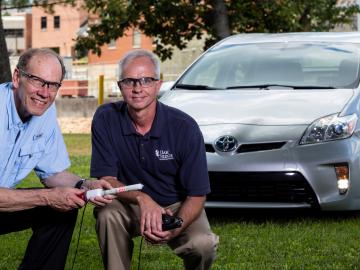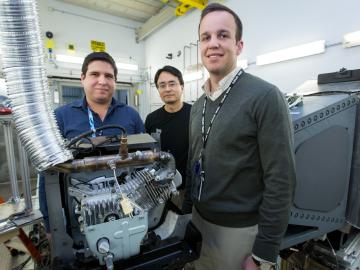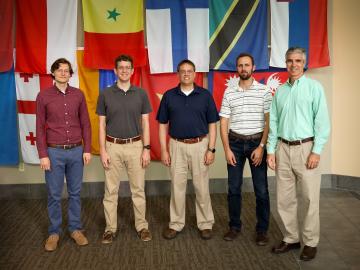
Filter News
Area of Research
- (-) Clean Energy (168)
- (-) Materials for Computing (13)
- (-) Neutron Science (72)
- Advanced Manufacturing (5)
- Biological Systems (1)
- Biology and Environment (102)
- Biology and Soft Matter (4)
- Building Technologies (2)
- Chemical and Engineering Materials (3)
- Chemistry and Physics at Interfaces (7)
- Climate and Environmental Systems (7)
- Computational Biology (1)
- Computational Chemistry (5)
- Computational Engineering (1)
- Computer Science (3)
- Data (1)
- Earth Sciences (1)
- Electricity and Smart Grid (1)
- Energy Frontier Research Centers (7)
- Fuel Cycle Science and Technology (2)
- Functional Materials for Energy (8)
- Fusion and Fission (32)
- Fusion Energy (7)
- Geographic Information Science and Technology (1)
- Isotopes (21)
- Materials (122)
- Materials Synthesis from Atoms to Systems (8)
- Materials Under Extremes (7)
- National Security (45)
- Neutron Data Analysis and Visualization (2)
- Nuclear Science and Technology (27)
- Quantum Condensed Matter (3)
- Quantum information Science (4)
- Renewable Energy (2)
- Sensors and Controls (2)
- Supercomputing (153)
- Transportation Systems (4)
News Type
News Topics
- 3-D Printing/Advanced Manufacturing (24)
- Advanced Reactors (2)
- Artificial Intelligence (6)
- Big Data (1)
- Bioenergy (12)
- Biology (5)
- Biomedical (7)
- Biotechnology (1)
- Buildings (11)
- Chemical Sciences (5)
- Clean Water (5)
- Climate Change (8)
- Composites (2)
- Computer Science (15)
- Coronavirus (9)
- Cybersecurity (5)
- Decarbonization (16)
- Energy Storage (21)
- Environment (21)
- Fossil Energy (2)
- Grid (13)
- High-Performance Computing (3)
- Machine Learning (3)
- Materials (10)
- Materials Science (13)
- Mathematics (2)
- Mercury (1)
- Microelectronics (1)
- Microscopy (4)
- Nanotechnology (6)
- National Security (2)
- Net Zero (1)
- Neutron Science (35)
- Nuclear Energy (3)
- Partnerships (4)
- Physics (1)
- Polymers (3)
- Quantum Computing (1)
- Quantum Science (2)
- Security (4)
- Simulation (1)
- Space Exploration (2)
- Summit (4)
- Sustainable Energy (14)
- Transportation (17)
Media Contacts
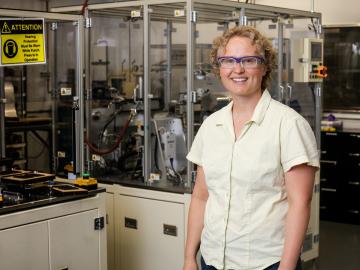
In the quest for better batteries, Rose Ruther has found that the positives nearly always outweigh the negatives, and that’s what keeps her coming back to the lab. Ruther works on novel materials to create batteries with higher energy density at a lower cost as part of the Roll to Roll Manufactur...
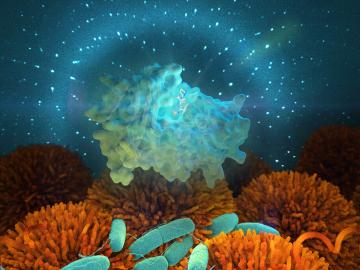
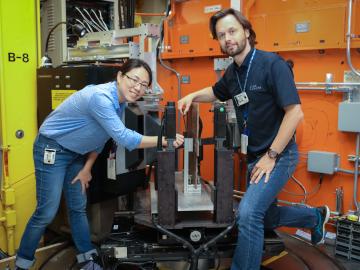

Inspired by her computer science studies and the possibilities of 3D-printing, intern Elizabeth Yeoh-Wang found a way to combine those pursuits as she worked on a software project at the Manufacturing Demonstration Facility (MDF) at Oak Ridge National Laboratory (ORNL) last summer. Elizabeth, a r...

Interdisciplinary work has been a hallmark of Julie Mitchell’s career, and it is a strength she expects to leverage in helping solve some big science challenges as she steps into the role of Deputy Director of the Biosciences Division at Oak Ridge National Laboratory (ORNL). Mitchell will support...
It’s common knowledge that driving aggressively can dent gas mileage, but it’s difficult to determine exactly how much gas drivers waste. A new study by researchers at the Department of Energy’s Oak Ridge National Laboratory has quantified the impact speeding and slamming on the brakes has on fuel economy and consumption. They found that aggressive behavior behind the wheel can lower gas mileage in light-duty vehicles by about 10 to 40 percent in stop-and-go traffic and roughly 15 to 30 percent at highway speeds. This can equate to losing about $0.25 to $1 per gallon.

Richard “Rick” Raines has been on the forefront of protecting critical communications systems from attack since before the term “cyber” was in vogue, and he is bringing that leadership to bear as he takes on the role of director for the Electrical and Electronics Systems Research Division (EESRD) at...
